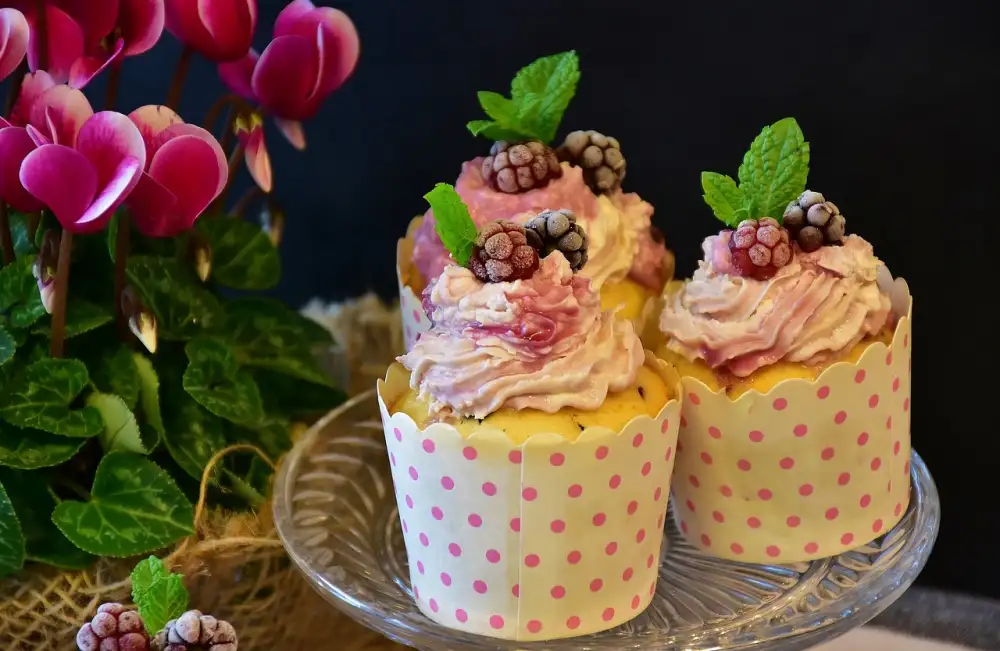Whisking Magic: The Ultimate Guide to Making Homemade Butter at Home

- Gathering the Ingredients
- Step-by-Step Instructions for Making Homemade Butter
- Step 1: Choosing the Right Cream
- Step 2: Allowing the Cream to Reach Room Temperature
- Step 3: Beating the Cream
- Step 4: Separating the Butter from the Buttermilk
- Step 5: Washing and Kneading the Butter
- Step 6: Adding Salt (Optional)
- Tips and Tricks for Perfect Homemade Butter
- Storing and Using Homemade Butter
There's something magical about making your own butter at home. The process is simple, yet the result is a creamy, rich spread that elevates any dish. Whether you're a seasoned chef or a novice in the kitchen, learning how to make homemade butter is a rewarding experience that will impress your friends and family. In this ultimate guide, we'll take you through the step-by-step process of creating your very own batch of homemade butter. Get ready to whisk some magic into your culinary creations!
Gathering the Ingredients
Before you embark on your homemade butter-making adventure, it's important to gather all the necessary ingredients. Luckily, making butter at home requires just one main ingredient - cream. Look for high-quality heavy cream or whipping cream that is free from any additives or preservatives.
Additionally, you may want to consider adding a pinch of salt to enhance the flavor of your homemade butter. This is entirely optional and can be adjusted according to your personal preference.
Make sure you have a clean and spacious working area, as well as a mixing bowl and electric mixer or stand mixer. Having these ingredients and equipment ready will ensure a smooth and successful butter-making process. So let's get started on whisking magic!
Step-by-Step Instructions for Making Homemade Butter
Step 1: Choosing the Right Cream
Start by selecting high-quality heavy cream with a fat content of at least 35%. This will ensure a rich and creamy homemade butter.
Step 2: Allowing the Cream to Reach Room Temperature
Let the cream sit at room temperature for about an hour. This will make it easier to whip and separate into butter and buttermilk.
Step 3: Beating the Cream
Pour the cream into a mixing bowl and beat it on medium speed until it thickens. As you continue beating, you'll notice the cream turning into whipped cream.
Step 4: Separating the Butter from the Buttermilk
Keep beating until you see clumps forming. These clumps are butterfat separating from buttermilk. Once you see this separation, stop beating.
Step 5: Washing and Kneading the Butter
Pour cold water over the clumps of butter to wash away any remaining buttermilk. Use your hands or a wooden spoon to knead the butter, removing excess liquid.
Step 6: Adding Salt (Optional)
If desired, add a pinch of salt to enhance the flavor of your homemade butter. Mix it in thoroughly.
By following these simple steps, you can create delicious homemade butter that is perfect for spreading on toast or using in your favorite recipes.
Step 1: Choosing the Right Cream
When it comes to making homemade butter, choosing the right cream is crucial. Look for heavy cream or whipping cream with a high fat content of at least 35%. This will ensure that your butter turns out rich and creamy. Avoid using ultra-pasteurized cream as it may not yield the best results. Opt for organic or locally sourced cream for a more flavorful butter. Remember, the quality of the cream you choose will greatly impact the taste and texture of your homemade butter. So, take your time to find the best cream available in your area.
Step 2: Allowing the Cream to Reach Room Temperature
Before you start making your homemade butter, it's important to let the cream come to room temperature. This step is crucial because cold cream will take longer to whip and may not yield the desired results.
To bring the cream to room temperature, simply take it out of the refrigerator and let it sit on the counter for about 30 minutes. Make sure to cover it with a clean cloth or plastic wrap to protect it from any contaminants.
Allowing the cream to warm up will make it easier to whip and will result in a smoother and creamier butter. So be patient and give your cream some time to reach that perfect room temperature before moving on to the next step.
Step 3: Beating the Cream
Once the cream has reached room temperature, it's time to start the process of turning it into butter. Transfer the cream to a mixing bowl or stand mixer and begin beating it on medium speed. As you beat the cream, you will notice it thickening and changing texture.
Continue beating until the cream starts to form soft peaks. This usually takes around 5-7 minutes, but it can vary depending on the type of cream and equipment used. Be patient and keep an eye on the consistency.
If using a stand mixer, be sure to use the whisk attachment for best results. If using a hand mixer, make sure to use high speed for efficient whipping.
As you beat the cream, you will see it transform from a liquid state into whipped cream. It will become thicker and more voluminous with each passing minute. The goal is to achieve a consistency similar to that of whipped cream but not too stiff.
Avoid overbeating as this can result in clumpy butter rather than smooth and creamy butter. Once you reach the desired consistency, stop beating immediately.
The beaten cream is now ready for the next step - separating the butter from the buttermilk.
Step 4: Separating the Butter from the Buttermilk
Once you have beaten the cream for a few minutes, you will notice a distinct change in texture. The cream will start to thicken and clump together. At this point, you need to continue beating until the mixture separates into solid butter and liquid buttermilk.
To separate the butter from the buttermilk, you can use a cheesecloth or a fine-mesh strainer. Place the cheesecloth or strainer over a bowl and carefully pour the mixture through it. The liquid that passes through is the buttermilk, which can be saved for other recipes like pancakes or biscuits.
Gently press down on the butter with a spoon or spatula to remove any excess buttermilk. This step is important because if there is too much buttermilk left in the butter, it can spoil quickly. Once you have removed as much liquid as possible, transfer the butter to another clean bowl.
Congratulations! You have successfully separated your homemade butter from the buttermilk. Now it's time to move on to the next step: washing and kneading the butter.
Step 5: Washing and Kneading the Butter
After separating the butter from the buttermilk, it's time to wash and knead the butter. This step is crucial as it helps remove any remaining traces of buttermilk, which can cause the butter to spoil faster.
To wash the butter, place it in a bowl of ice-cold water. Gently press and knead the butter with your hands, allowing any remaining buttermilk to seep out into the water. Change the water a few times until it remains clear.
Once you've thoroughly washed the butter, transfer it onto a clean surface. Use a wooden spatula or your hands to knead and shape it into a smooth ball or block. This process helps distribute any remaining moisture evenly throughout the butter.
Remember to work quickly during this step, as excessive handling can melt the butter. If needed, you can refrigerate it for a few minutes between kneading sessions to keep it firm.
By washing and kneading your homemade butter, you'll achieve a higher quality product with a longer shelf life. The result will be creamy, flavorful butter that is perfect for spreading on toast or using in your favorite recipes.
Step 6: Adding Salt (Optional)
Adding salt to homemade butter is a personal preference. It enhances the flavor and helps preserve the butter. If you decide to add salt, make sure it is a fine grain salt, such as sea salt or kosher salt.
To add salt, sprinkle a small amount over the butter and gently knead it in. Start with a pinch of salt and taste as you go, adding more if desired. Remember that you can always add more salt later, but you can't take it out once it's mixed in.
Be cautious not to over-salt your butter, as it can overpower the natural sweetness of the cream. The goal is to enhance the flavor without making it too salty.
Once you have added the desired amount of salt, give your butter one final knead to evenly distribute the salt throughout. Then, shape it into a log or place it in molds for a decorative touch.
Adding salt is optional, so feel free to experiment with different flavors and herbs if you're feeling adventurous. Just remember to keep track of your additions so you can recreate your favorite variations in the future.
Now that your homemade butter is complete, let's move on to tips for storing and using it effectively!
Tips and Tricks for Perfect Homemade Butter
1. Use high-quality cream: The quality of your butter will depend on the cream you use. Look for fresh, high-fat cream from a trusted source.
2. Don't overbeat the cream: Beating the cream too much can result in grainy butter. Stop beating once it reaches a thick consistency.
3. Use a stand mixer or hand mixer: While it's possible to make butter by hand, using a mixer will save you time and effort.
4. Add ice water during washing: Adding ice water while washing the butter helps remove any remaining buttermilk, resulting in a longer shelf life.
5. Experiment with flavors: Once you've mastered the basic recipe, try adding herbs, spices, or even honey to create unique flavored butters.
6. Keep your equipment cold: Cold utensils and bowls help keep the cream at the right temperature and prevent it from turning into whipped cream.
7. Patience is key: Don't rush the process. Take your time when beating and washing the butter to ensure a smooth texture and rich flavor.
Remember, practice makes perfect! Don't be discouraged if your first batch isn't perfect – keep experimenting and enjoy the journey of making delicious homemade butter.
Storing and Using Homemade Butter
Once you have made your delicious homemade butter, it's important to store it properly to maintain its freshness and flavor. Here are some tips for storing and using your homemade butter:
1. Storage: Homemade butter should be stored in an airtight container or wrapped tightly in wax paper or plastic wrap. This will help prevent it from absorbing any odors or flavors from other foods in the refrigerator.
2. Refrigeration: Homemade butter should be kept refrigerated to maintain its quality. It can last for up to two weeks in the refrigerator.
3. Freezing: If you have made a large batch of homemade butter and want to store it for a longer period, freezing is a great option. Wrap the butter tightly in freezer-safe packaging or divide it into smaller portions before freezing. It can be stored in the freezer for up to six months.
4. Softening: When you're ready to use your homemade butter, take it out of the refrigerator and allow it to soften at room temperature for about 15-30 minutes before using. This will make it easier to spread or incorporate into recipes.
5. Cooking and Baking: Homemade butter adds a rich and creamy flavor to both savory and sweet dishes. Use it as a spread on bread, toast, or pancakes, or melt it over steamed vegetables for added richness. In baking, homemade butter enhances the taste and texture of cookies, cakes, pastries, and more.
6. Flavored Butters: Get creative with your homemade butter by adding herbs, spices, or citrus zest to create flavored butters. Simply mix in your desired ingredients while the butter is still soft and then chill until firm again.
By following these storage tips and exploring various ways to use your homemade butter, you can enjoy its fresh taste and elevate your culinary creations!
Now that you have successfully made your own homemade butter, it's time to enjoy the fruits of your labor! Spread it on warm toast, melt it over steamed vegetables, or use it in your favorite baking recipes. The possibilities are endless.
Not only does homemade butter taste incredibly delicious, but it also gives you the satisfaction of knowing exactly what ingredients are going into your food. Plus, making butter at home is a fun and rewarding experience that will impress your family and friends.
So go ahead, grab a slice of fresh bread and slather on some of your creamy homemade butter. Take a moment to savor the rich flavor and smooth texture. You've created something truly special in your own kitchen. Enjoy!
Published: 23. 11. 2023
Category: Food



